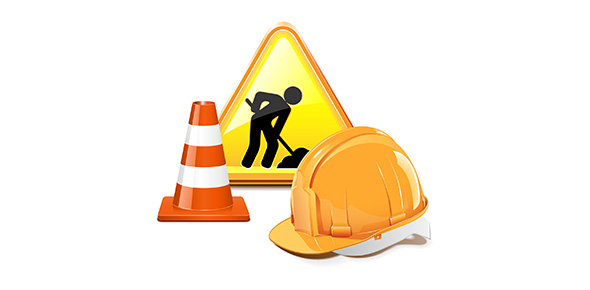Related Flashcards
Related Topics
Cards In This Set
| Front | Back |
|
Marketing objectives are ?
|
- To target a new market or market segment
- To achieve or maintain market share - To improve the image and reputation of products - To reduceelimate competition in the market - To extend the firm's understanding of its customers needs and wants - To increase profitability and revenue - To develop a range of products. |
|
What is niche marketing and what concepts might it include?
|
Niche marketing involves a business aiming a product at a particular , often tiny, segment of a market.
Concepts of niche marketing include: - production and sale of a single distinctive product - sale of that product through a specialised outlet - targeting of a well-defined market segment to which the specific product will appeal - use of high-quality merchandising and advertising - production of a high-quality distinctive product. |
|
What is mass marketing?
|
Mass marketing is aimed at whole markets rather than particular parts of them.
|
|
What are the advantages/disadvantages of Mass marketing?
|
Advantages
- focus on high volume sales results in lower unit costs and so competitve pricing. - focus on a very broad customer base and socio-economic groupings helps to spread risk. Disadvantanges - High levels of competition because the mass market will attract others into the market place. - As the market is so large, and probably diverse, it is difficult to see market trends or changes in consumer preferences. - This is a market dominated by very large companies that can benefit from the economies of scale and have capacity to deliver large quanitites of products to the market. It is very difficult for a small business to compete with them. |
|
What are the advantages/disadvantages of Niche marketing?
|
Advantages
- Easier for small businesses to compete in this market, economies of scale savings not an issue - focused marketing is less expensive than mass marketing and tends to reach customers who are more likely to buy - less wasteful of marketing budget - Ability to charge a premium on the price to reinforce uniqueness and exclusivly - first mover in a new market so gain a hold in the market before competitors can establish themselves. Disadvantages - Highly specialised P/S can be vulnerable to market changes - If sucessful competitors are likely to move in to gain the benefits from higher profitability of being able to change higher prices - especially large businesses looking for new markets - Relatively low levels of sales increase pressure on margins if there are even relatively small fluctuationsin sales. |
|
What are the principles with business to business(B2B) marketing?
|
When businesses specialise in supplying other businesses there marketing is focused on identify business customers.
It is seen that B2B marketing is easier than consumer marketing as there are a limited number of customers and they will be known, even if only through trade directories and yellow pages. It is a fairly straight forward and efficient process to identify business customers and market directly to them. In some industries, there is a clear clustering of businesses supplying a major company. There is a distinct advantage in this arrangement as the supplier generally has a constant purchasing relationship with its corporate customer. However there is also servere disadvantages as well, for example large businesses with huge buying power may seek to drive down the prices charged by the supplier. Worse still if the corporate customer fails it makes the suppliers business vulnerable. It is not uncommon to see closure of a large businesses activities result in the business failure or shrinkage of the business supplying them. |
|
What are the 4 P's associated with the marketing mix and what do they represent?
|
Product
What is it about your P/S that you want to market as something that represents your strengths - or USP (unique selling point). Price How do you fix the price of your service - and then present that to your potential customers? Promotion What promotional methods do you use: advertising , developing a memorable name? Costs and value for money? Are there particular groups of people you might want to target? Place Where are your potential customers ? How do you reach them? Are there gaps in your possible geographical coverage? |
|
What is the importance of an integrated marketing mix
|
Product
Does the product meet the needs of the market? Will production and availability be able to meet the demand resulting from a marketing campaign. Has the product had its day ie no longer in demand because market is saturated or there are better/updated products available? Does it have a USP that cannot be matched by competitors? Promotion The product must be promoted in the right way, using the most effective medium and sending the right message to potential customers. Eg Bentley cars would not be mass marketed as they are an exclusive brand. Price Fixing a price and linking it to offers and discounts is very much part of the mix as get this wrong and customers will not buy. It is possible to price a product too cheaply (ie it cant be any good if its that cheap, anyone can buy it, lacks exclusivity). Place The marketing must be in places and at times that will reach intended customers. |
|
What influences the development of new goods and services?
|
USP -unique selling points or propositions
If a product is operating in a niche market, it is usually very easy to identify its uniqueness and how it is meeting the very specific needs of those customers. As a relatively small group of customers when compared to the population as a whole, there is something that distinguishes them from the rest of the population. In some way the product being targeted at them is addressing some aspect of that uniqueness. More problematic in mass marketing where variety of alternative products are available. So the development and marketing of the product must focus on differentiating itself from similar products - ie show that it is addressing some clearly defined market need that other products are not meeting, or not meeting adequately. Product-Portfolio Analysis Every business needs to know the contribution each P/S makes to its revenue line and reputation. This analysis helpsa business determine which products to promote through improved marketing or perhaps discontinue. Product mix Is all those aspects of a product - design, use, styling, price - which combined, form the total image and utility of a product as seen by the firms customers. The best or optimum mix is that combination of factors which maxmises the firms opportunity to achieve objectives in the areas of sales revenue, volume and profitability. The mix has to be right for the product to sell at a profit, therefore 3 areas of decision preoccupy management - the right product mix in the launching of a product. - the balance of each characteristic against the others - the timing of addtions and changes to suit the market and extend the life of the product |
|
Explain the Boston Matrix.......
|
Its a useful means of allowing businesses to analyse and categorise their product mix by reference to market share and growth rates. The matrix places products in 4 categories as follows:
Cash Cows Mature businesses or products with a high market share but low growth rate. Most fixed investment has already been made and a substantial cash flow is generated, the surplus being used to develop and support other businesses and products requiring higher levels of investment and marketing support. Stars Businesses or products with a high rate of growth, which are often able to generate sufficient cash to fund the high investment necessary to meet increasing demand. As the market matures, such businesses/products should be managed in order to become cash cows. Question marks (problem children Although operating in a growth market, low market share is likely to mean that these business units are unable to sustain the required level of investment needed in order to try to them into stars. Competitor pressures may result in such a business or product becoming a dog. Dogs the combination of low growth and market share is typical of these businesses and products, which operate in mature markets. Firms frequently face strategic decisions regarding whether to continue to support dogs or to implement a divestment(discontinuation) stratergy. |
|
What is the first stage of a product life style?
|
Research and development stage
This stage runs from the original concept of a P/S to the final full scale introduction on to the market. The degree of innovation is an important factor in both cost and timescale of developement. New products based on an already existing product would have small development costs, and the product continues to earn sales revenue, with totally new products the costs are heavy, and no revenue will be earned during the development stage, the product represents a totally new investment for the company. Generally there are 2 plans of development, firstly technical development and testing of a product, and secondly the market testing of a product. These parallel developments can be broken down into 5 seperate sequences: - market research and scientific experimentation devoted to the initial selection of a potentially new product , perhaps from many likely products or ideas. - production of the first experimental model and market tesing on a sample of potential customers. - pilot production of the final prototype and wider market testing for quality and customer reaction in the market. - completion of full-scale production schedules and production budgets. - full-scale production and sale throughout the selected markets of the company. Problems that would halt this sequence are: - failure to meet safety standards - technical failure - steeply rising development costs - extension of development time - unfavourable market reaction - competitor able to place rival in the market first. |
|
What is the 2nd stage of the product lifestyle?
|
Introduction to the market
Most new products have a low sales volume during the initial stages of the cycle and a company produces at a loss. There are several resaons for this: - Promotion and admin costs are at their highest, for in order to gain full acceptance by the market, very heavy advertising and promotion has to be undertaken at this stage. - There may be a delay in expanding the production capacity of the manufacturer because of a shortage of space or raw materials, or through industrial action. It is likely that the product will still have technical problems which ahve not been ironed out during test development. - There may be a delay in providing customers with a new product because of the initial selection of wholesalers and retailers to handle new, and therfore risky, lines of business. - There may be a reluctance on the part of the consumers to change established buying habits. In the introductory period, new products are likely to be accepted only by specific types of customer, who are actively seeking new styles, fashions or entirely new products which conform to their non-traditional lifestyle. During the initial stage costs will be high and so do the prices, distribution will be limited but competition minimal. Therefore the objectives of marketing policy will be: - to increase production and the number of outlets, thus increasing the speed at which customer demand can be satisfied. - to reduce the price as quickly as possible to catch the potential market before the entry of competitors. - to recoup the firms costs as quickly as possible in order to push beyond the break-even point for the product. |
|
What is the 3rd stage of the product lifestyle?
|
Growth
This period is marked by increasing sales as more people become aware of the product, technical difficulties have been ironed out, wholesale and retail oulets expand and the product becomes familar to conservative buyers( those who purchase products only when they are established in the market) Promotional expenditure must remain high in order to keep the product familar. Prices remain relatively high unless the firm has good reason to believe that price reduction will greatly aid further market penetration. It is at this stage that the firm will have to react to competitors eager to enter the expanding market. This might resulting in lowering prices and the introduction of major innovations to the product. |
|
What is the 4th stage of the product lifestyle?
|
Establishment and maturity
Once a product is firmly established on the market, consumer demand flattens out and the rate of sales demand will begin to decline. Prices begin to fall, marginal companies retire from the market, leaving entrenched firms to share out the market between them. Promotional expenditure remains stable, just enough to keep the product in the public eye and retain their present market share. Its this stage that a host of minor modifications are likely to be made to the product(style, colouring, design, packaging etc) in order to extend the firms share of the market. |
|
What is the 5th stage of the product lifestyle?
|
Final stage of decline and death
Sales volumes begin to decline, as do profitsand revenue. The number of firms manufacturing the product begins to decline, as do the number and types of distributors willing to handle the product. Firms begin to withdraw from unprofitable markets and abandon unprofitable product lines. Funds are no longer allocated to advertising and promotion. The rate of decline may be swift or it may be slow, extending over number of years. The slower the rate of decline the more likely management will be able to forestall it and plan the marketing of neew products well short of the decline stage. Most firms seek to extend the life of their products, not only to cover costs, but also to give them sufficient time to develop the next generation of commodities. This is often referred to as an extension stratergy and is designed to extend the life cycle of a product. |








